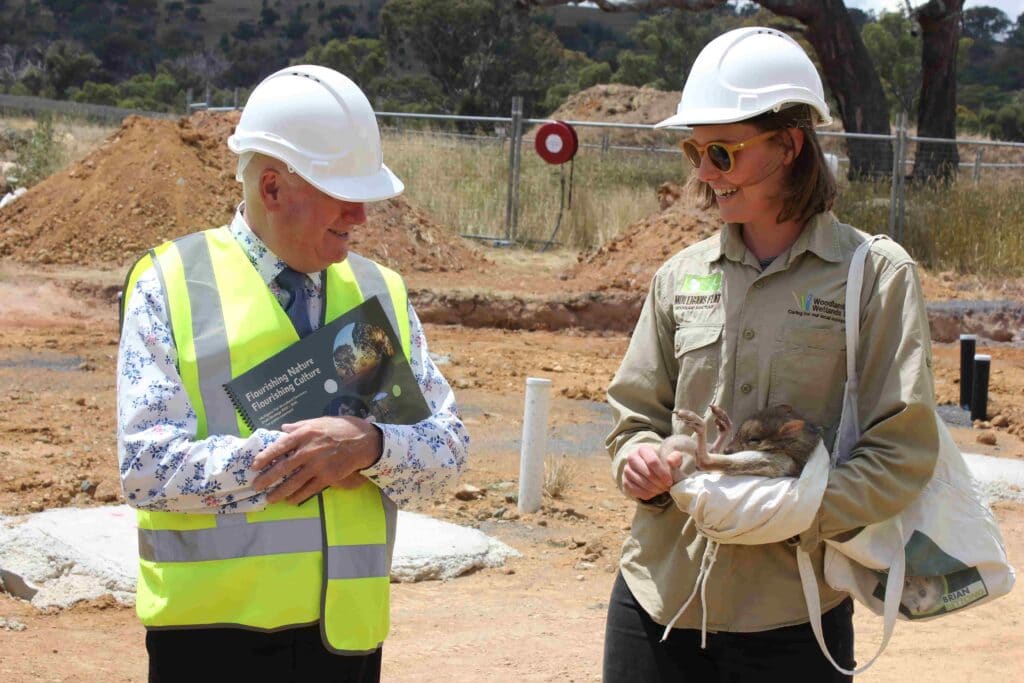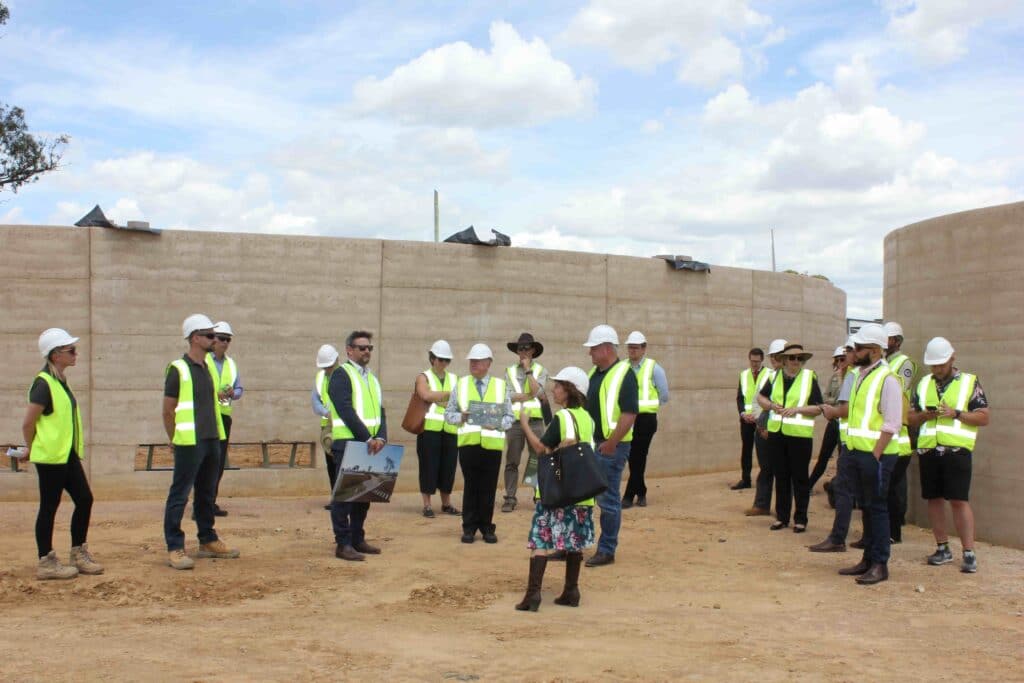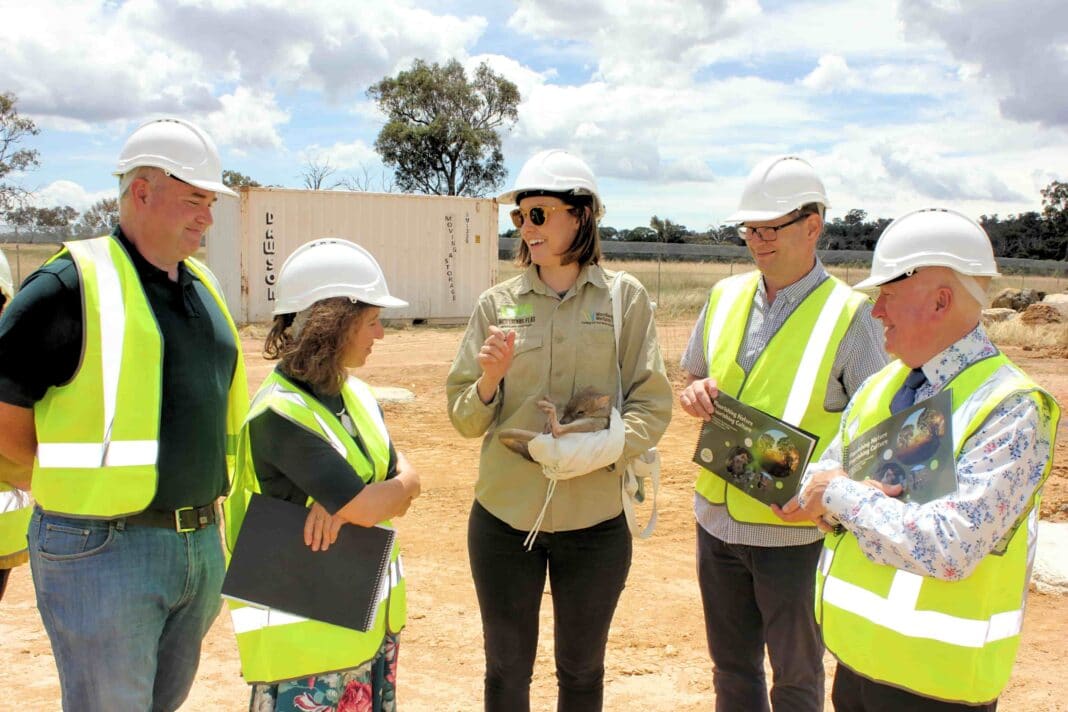The construction site in Rosenberg Street, Throsby, looks like a ruined desert city: blank-faced walls towering over you, a sandy floor under a cloudswept blue sky, remnants of some forgotten arena.
But in spring next year, this seemingly arid spot will have been transformed into a visitor’s centre with trees, native grasses, and a play area – the portal to one of the ACT’s most successful wildlife conservation programs, the Mulligans Flat Woodland Sanctuary.
Mick Gentleman, Minister for Planning and Land Management, and Rebecca Vassarotti, Minister for the Environment, launched a draft strategic plan for the next 25 years at the site yesterday, Thursday 10 December.
“This sanctuary is special because it allows people to learn about and experience the region’s unique ecosystem right in their backyard,” Ms Vassarotti said.
The 1,278-hectare Sanctuary was set up in 2009 to reintroduce ACT fauna that had become extinct in the region, safe from the threat of introduced species; it is Australia’s first fox, cat, rabbit and hare-free sanctuary. It is managed by the ACT Government’s Parks and Conservation Service, in partnership with the Australian National University and the Woodlands and Wetlands Trust.

There is a thriving population of eastern bettongs – the first time in more than a century the marsupials have lived in the wild on mainland Australia. Mr Gentleman’s favourites are the bush stone-curlews. He recalled how he heard the cry of the curlew on his first visit to Mulligan’s; he had not heard them in Canberra since he was seven years old. Quolls, superb parrots, and golden sun moths also have a home here.
“This success means these animals can be shared with other sanctuaries around Australia to help build populations in other locations, and safeguard species from extinction,” Mr Gentleman said.
The draft strategy aims to make the Sanctuary, by 2045, “a flourish grassy woodland teeming with re-introduced species, a model for adapting to climate change”, that is recognised nationally and internationally as a centre of research and management excellence.
One priority is to include the Ngunnawal Traditional Custodians in management; the Sanctuary would be somewhere the Ngunnawal people can practise their culture and use their land management practices to tend the area. The strategy was developed with input from the Dhawura Ngunnawal Caring for Country Committee.
Ms Vassarotti said the strategy set a path for the partnership to be a leader in conservation research and management across the country.

The Sanctuary is seeking the community’s feedback and ideas over the next couple of months. You can view the strategy and have your say on the ACT Government YourSay website: https://yoursay.act.gov.au/mulligans-flat-woodland-sanctuary-draft-strategy.
The Sanctuary will run drop-in sessions at the Forde Community Centre; the first will be held on Thursday 17 December from 10am to evening.
“Now we’ve got a chance for the community to have a say in the Mulligan’s Flat Sanctuary and how it should be managed for the next 25 years,” Ms Vasarotti said. “I’m really excited to see how the community responds to the masterplan and this fantastic site.”
The new Learning Centre will serve as a transition from the urban / city landscape into the nature reserve into the Sanctuary, replacing the current entry at Forde, Woodlands and Wetlands Trust general manager Dr Jason Cummings said. It is expected to open in spring 2021.
For more news:



